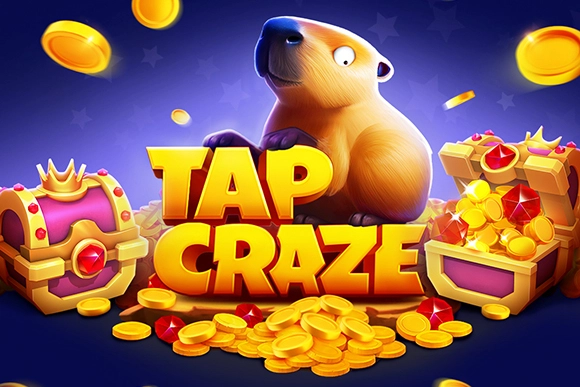Keno is one of the oldest gambling games in the world—dating back over 2,000 years to ancient China. Today, it’s a popular feature in both land-based and online casinos, offering lottery-style thrills and the possibility of large payouts from small wagers.
While Keno is a game of chance, strategic play, smart number selection, and effective bankroll management can significantly improve your overall experience and odds of success.
The Ultimate Guide to Play Keno

Rules, Strategies & Pro Tips to Win More
What Is Keno and How Does It Work?
Keno is similar to a lottery:
- You pick numbers (usually 1–20) from a pool of 1 to 80.
- The game randomly draws 20 winning numbers.
- The more of your numbers that match the drawn numbers, the higher your payout.
Basic Game Flow:
- Choose your wager amount (e.g., $1, $2, $5).
- Select how many numbers you want to play (from 1 to 20).
- Pick your specific numbers (or let the system auto-pick).
- 20 numbers are drawn at random.
- You’re paid based on how many of your picks match the draw and how many numbers you selected.
Keno Payout Structure & Odds
The payout table varies by:
- How many numbers you choose (a “spot”)
- How many hits (correct numbers) you get
- The casino or game provider
Example (10-spot ticket):
| Hits | Payout (per $1 bet) |
| 10 | 10,000x |
| 9 | 500x |
| 8 | 50x |
| 7 | 10x |
| 6 | 5x |
| 5 | 2x |
| 0-4 | 0x |
Odds Example (10-spot): Hitting all 10 numbers is 1 in 8,911,711.
Pro Tip: The house edge in Keno is high—ranging from 20% to 35%. Treat it like lottery play with entertainment value, not a guaranteed income source.
Smart Keno Strategies for Better Play
Strategy 1: Choose Fewer Numbers (4–8 Spots)
While you can choose up to 20 numbers, your odds improve (and payouts remain solid) when you stick to 4 to 8 picks.
- 4-spot and 5-spot tickets hit more frequently
- Better chance of matching at least 3 numbers
Why it works: Smaller number selections have a lower variance, meaning you win more often, even if prizes are smaller.
Strategy 2: Play Consistent Numbers Over Time
Pick a set of your favorite numbers (birthdays, patterns, lucky numbers) and stick with them for multiple draws.
Why it works:
While every draw is random, playing consistent numbers can help you:
- Avoid switching strategies mid-session
- Track how your numbers perform over time
- Enjoy the psychological benefit of “ownership” over your picks
Strategy 3: Avoid Selecting Too Many Numbers
- The more numbers you pick, the harder it is to match them all.
- 10–15 spot tickets sound tempting with big payouts, but the odds drop dramatically.
Pro Tip: Most experts recommend choosing between 4 and 7 numbers for the best balance between frequency of wins and meaningful payouts.
Strategy 4: Use Multi-Race Play (for Budget Efficiency)
Many Keno games allow you to play the same numbers over multiple draws.
- Set your bet amount and number selection once
- Let the system repeat for 5, 10, 20+ games
Why it works:
- Speeds up gameplay
- Saves time for serious sessions
- Encourages consistent strategy
Strategy 5: Track and Log Your Results
- Use a simple notepad or spreadsheet
- Track:
- What numbers you pick
- How many you hit
- How many draws you played
- Your total wager and total return
Why it works: It helps identify patterns in your play, track profitability, and keep emotions from overriding logic.
Bankroll Management in Keno
Smart money management is key to enjoying Keno and playing longer.
Pro Tips:
- Budget your session before you play
- Limit each game wager to 1–2% of your bankroll
- Avoid doubling or “chasing losses”
- Set a win goal (e.g., double your starting amount)
- Set a loss limit (e.g., 30% of session bankroll)
Example Session Plan:
- Bankroll: $100
- Bet: $2 per game
- Number of Games: 50 max
- Stop if you hit a $200 payout or drop below $60
Pro Tips and Insights to Improve Your Edge
Stick to Reputable Casinos or Providers
Choose well-known platforms like:
- Evoplay Book of Keno
- Spribe’s Keno (simple, sleek UI)
- Playtech Age of the Gods: Keno
Use Bonus Offers Carefully
Look for casinos that:
- Offer free plays or matched deposits
- Have low wagering requirements
Pick Balanced Patterns
- Avoid clumping all numbers together (e.g., 1–10)
- Try spreading selections across the 1–80 range
- Some players use “mirrored pairs” or “cross-grid” selections
Understand RNG (Random Number Generators)
Each draw is independent. Past outcomes don’t influence future ones. There is no “due number.”
Sample Keno Playing Plan (Balanced Strategy)
| Action | Details |
| Spot Selection | 6 numbers |
| Chosen Numbers | 3, 8, 17, 35, 49, 72 |
| Bet Size | $2 per game |
| Games per Session | 25–50 draws |
| Stop Loss | -$30 from starting bankroll |
| Win Goal | +$50 or hitting 6-number win |
| Mode | Auto-play or manual watch |
What to Avoid in Keno
- Don’t pick the maximum 20 numbers (you won’t match many)
- Don’t chase patterns or hot/cold numbers
- Don’t use progressive betting (e.g., Martingale) on a game of pure chance
- Don’t treat Keno as a guaranteed income—it’s a high-variance game
Conclusion: Play Keno Smart, Stay Disciplined
Keno is a fun, lottery-style game that can offer big thrills on small bets. While you can’t change the odds, you can play smarter, manage your risk, and set yourself up for a better, longer-lasting, and more enjoyable experience.
Key Takeaways:
- Pick 4 to 7 numbers for balance
- Use consistent picks and session plans
- Manage your bankroll strictly
- Use multi-race plays to simplify your sessions
- Keep your expectations realistic—enjoy the game, not just the jackpot






















